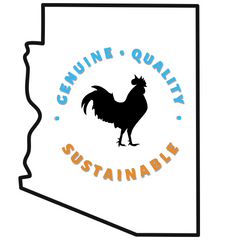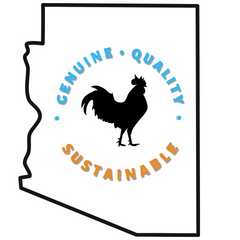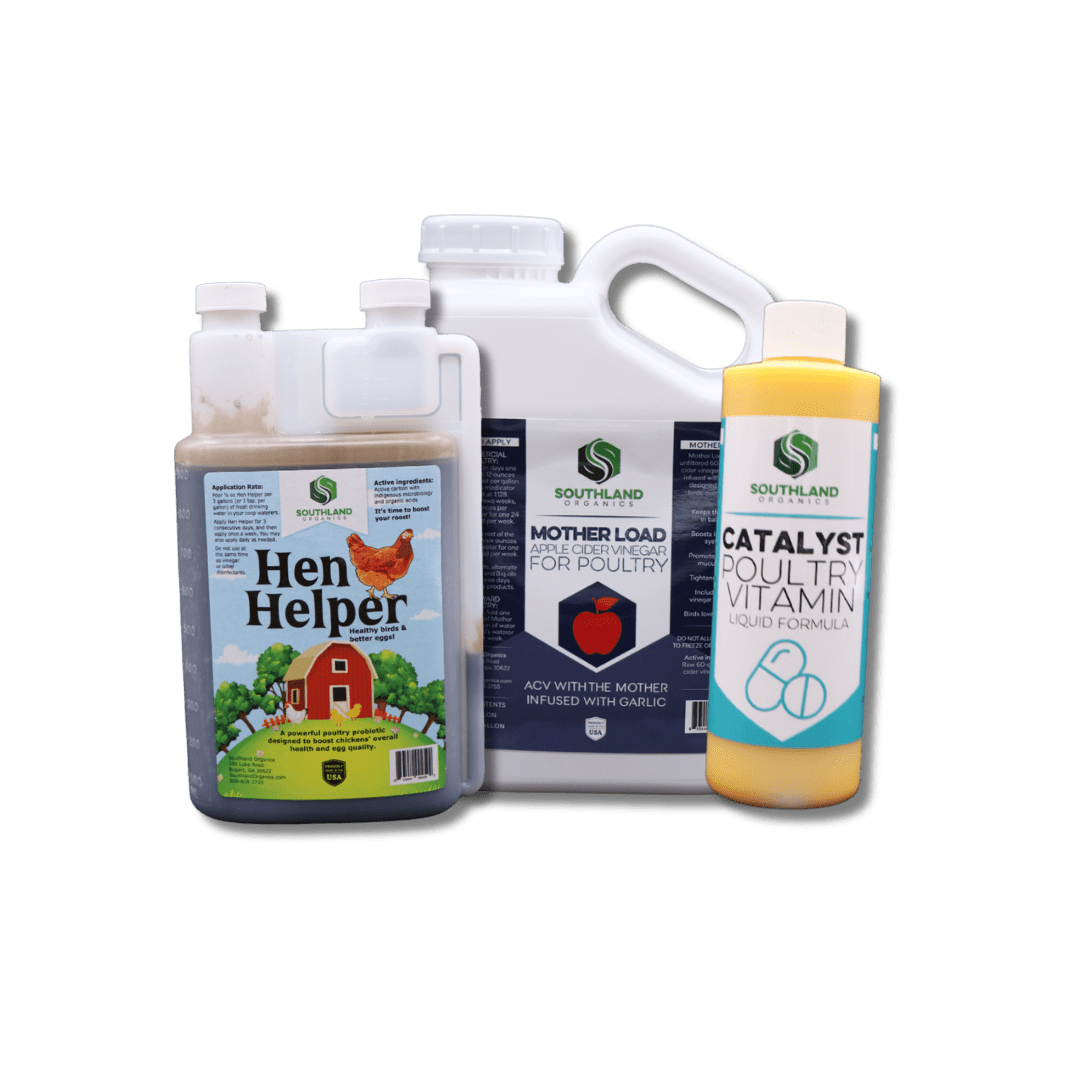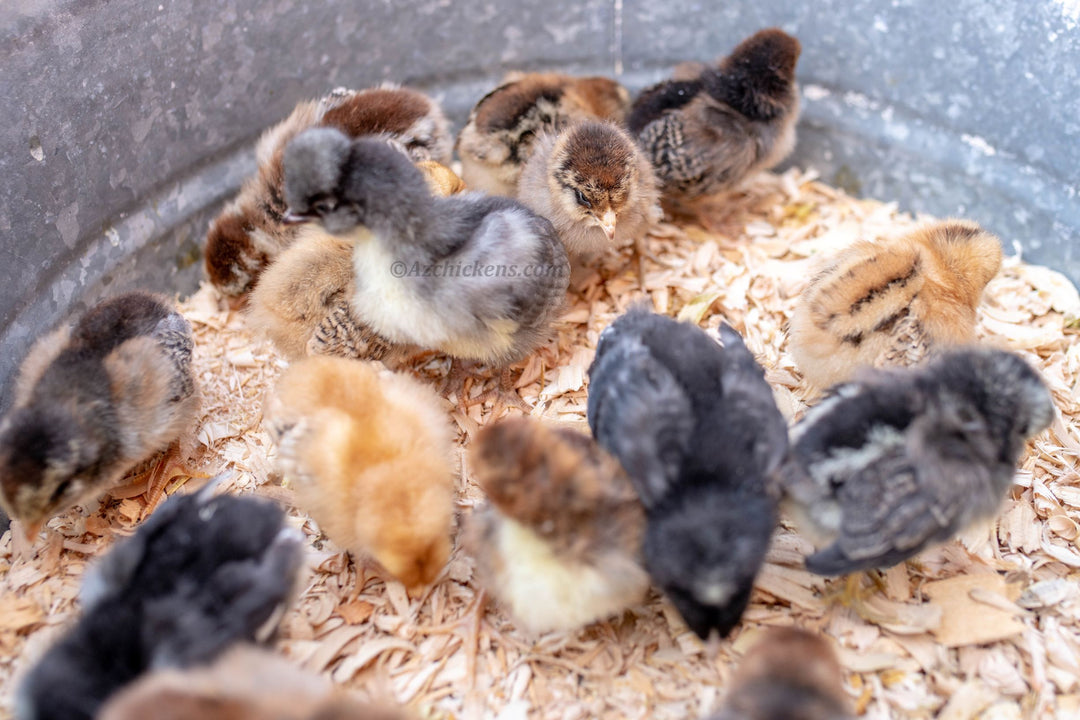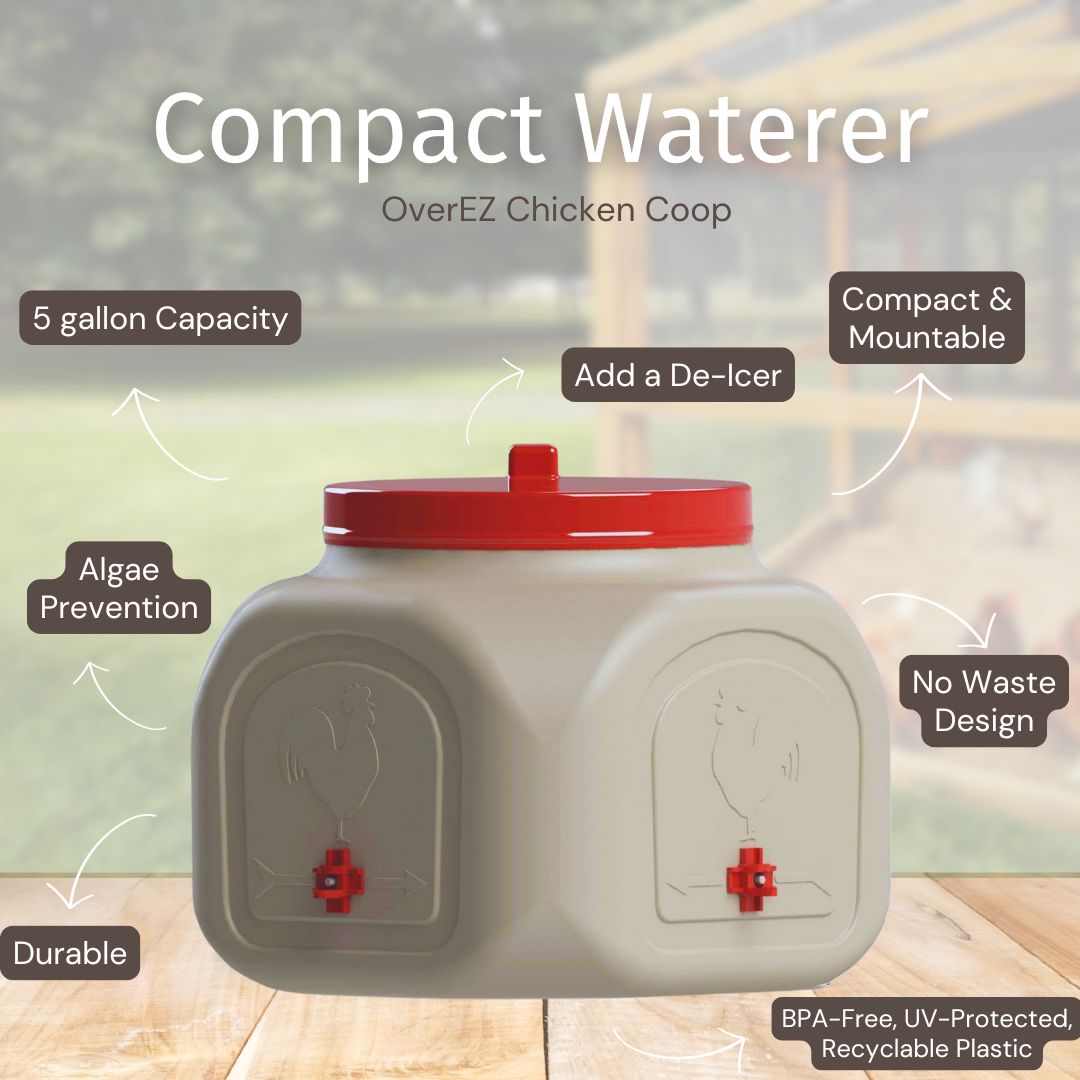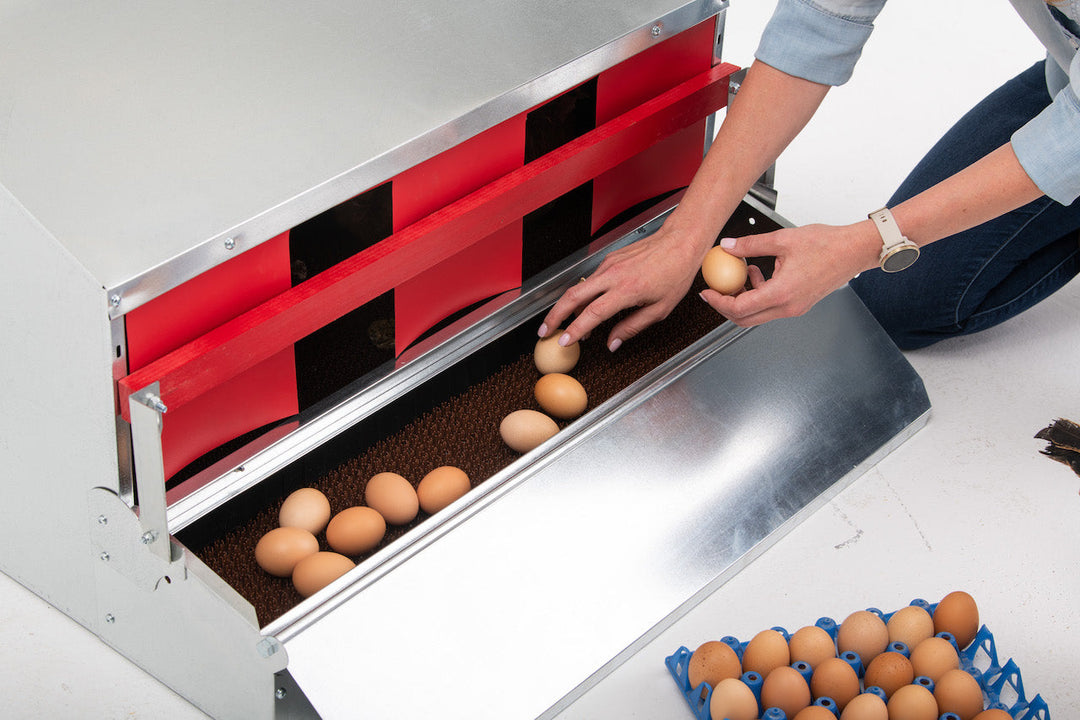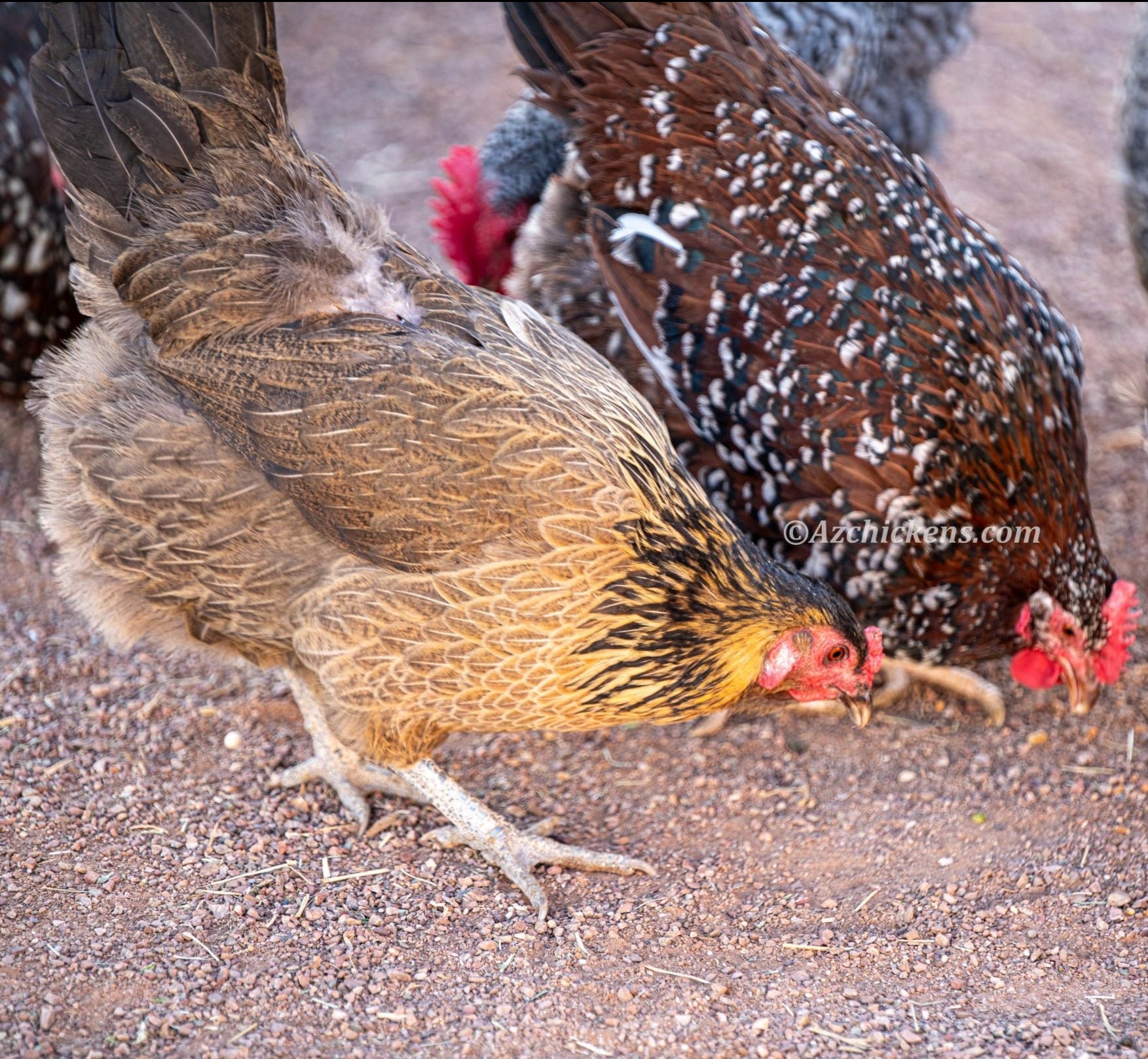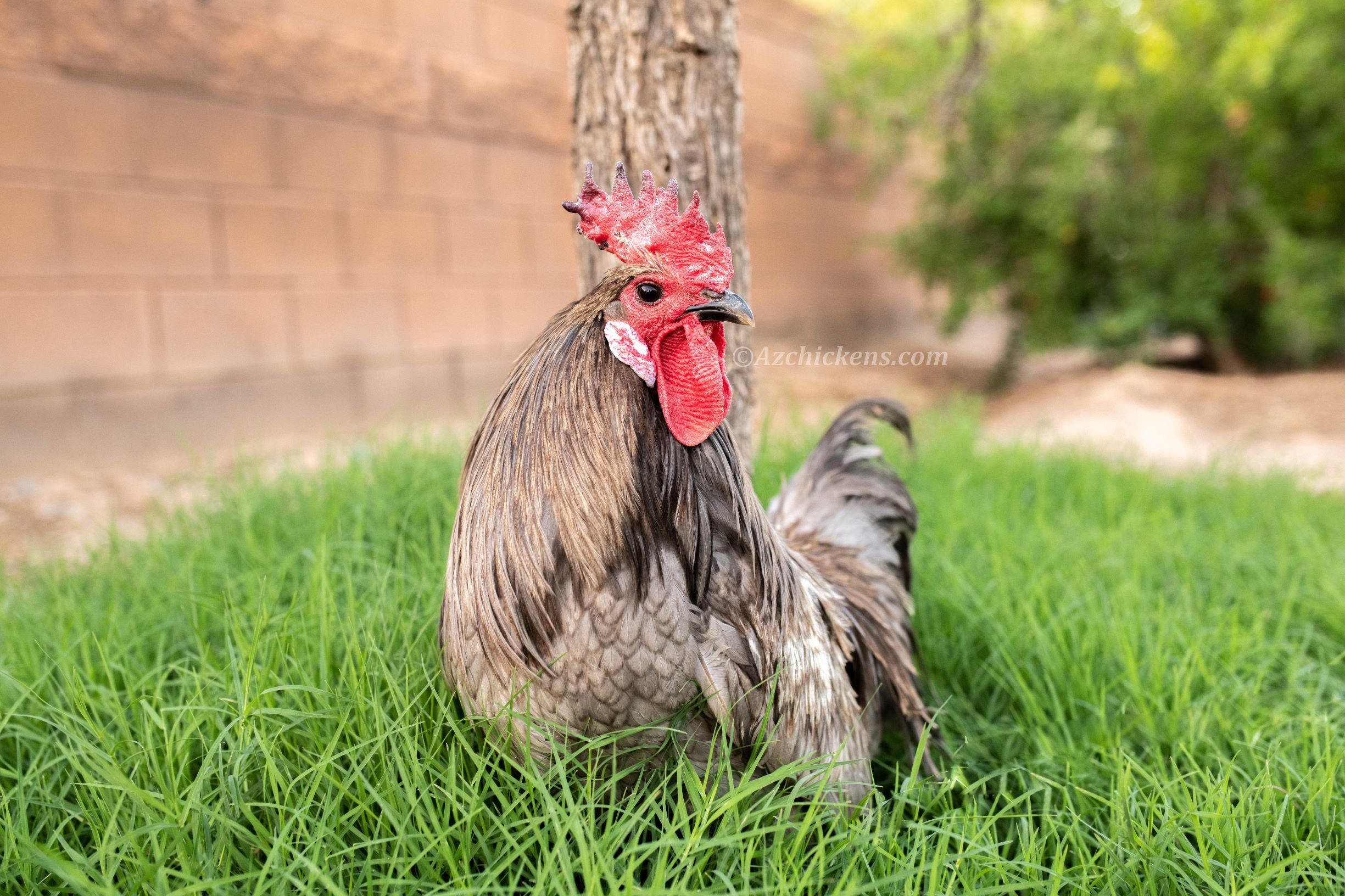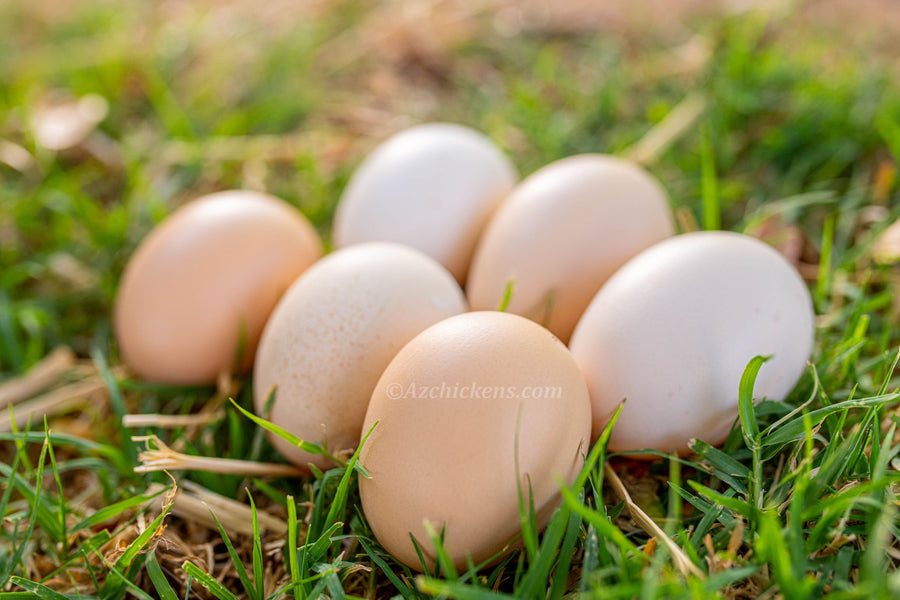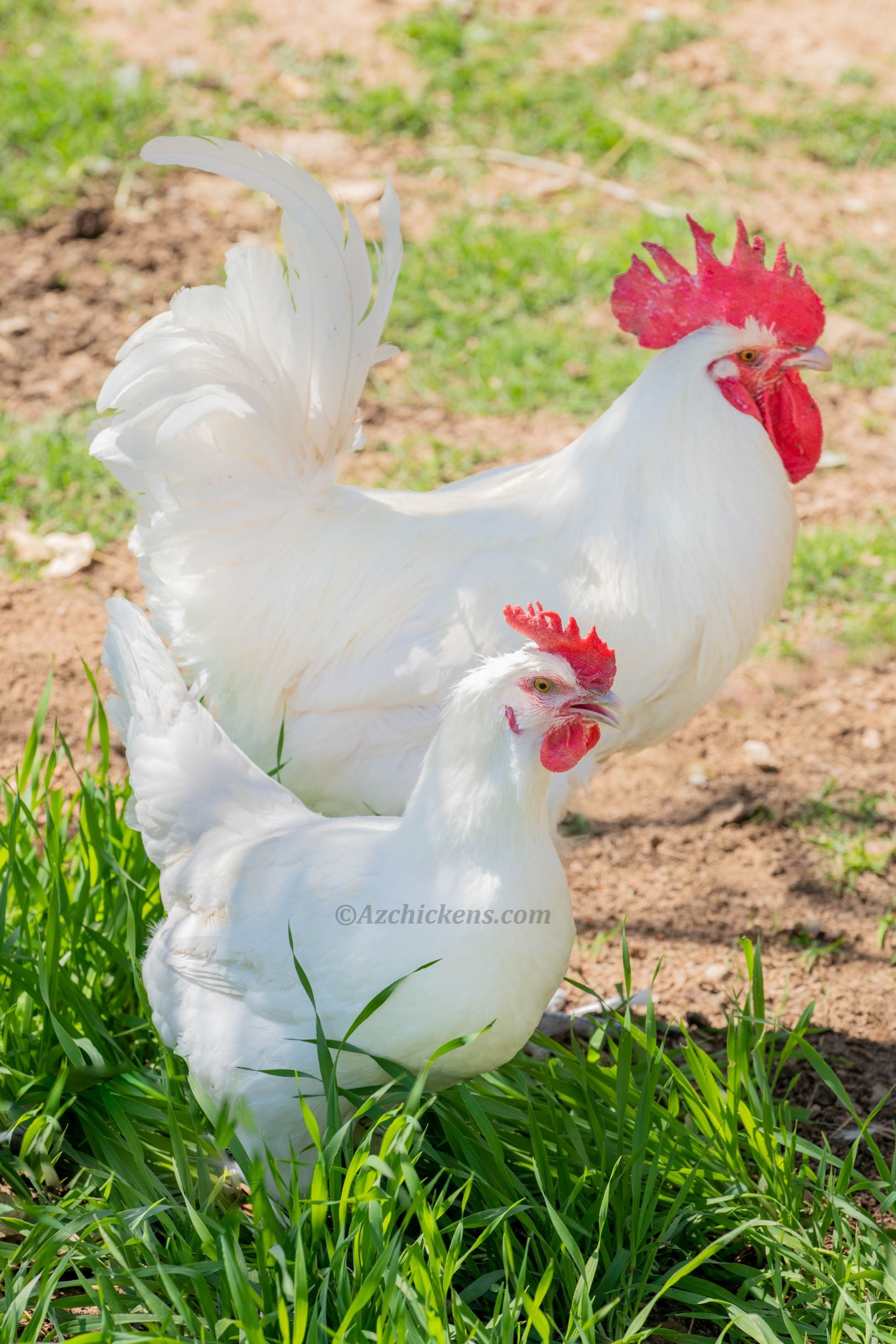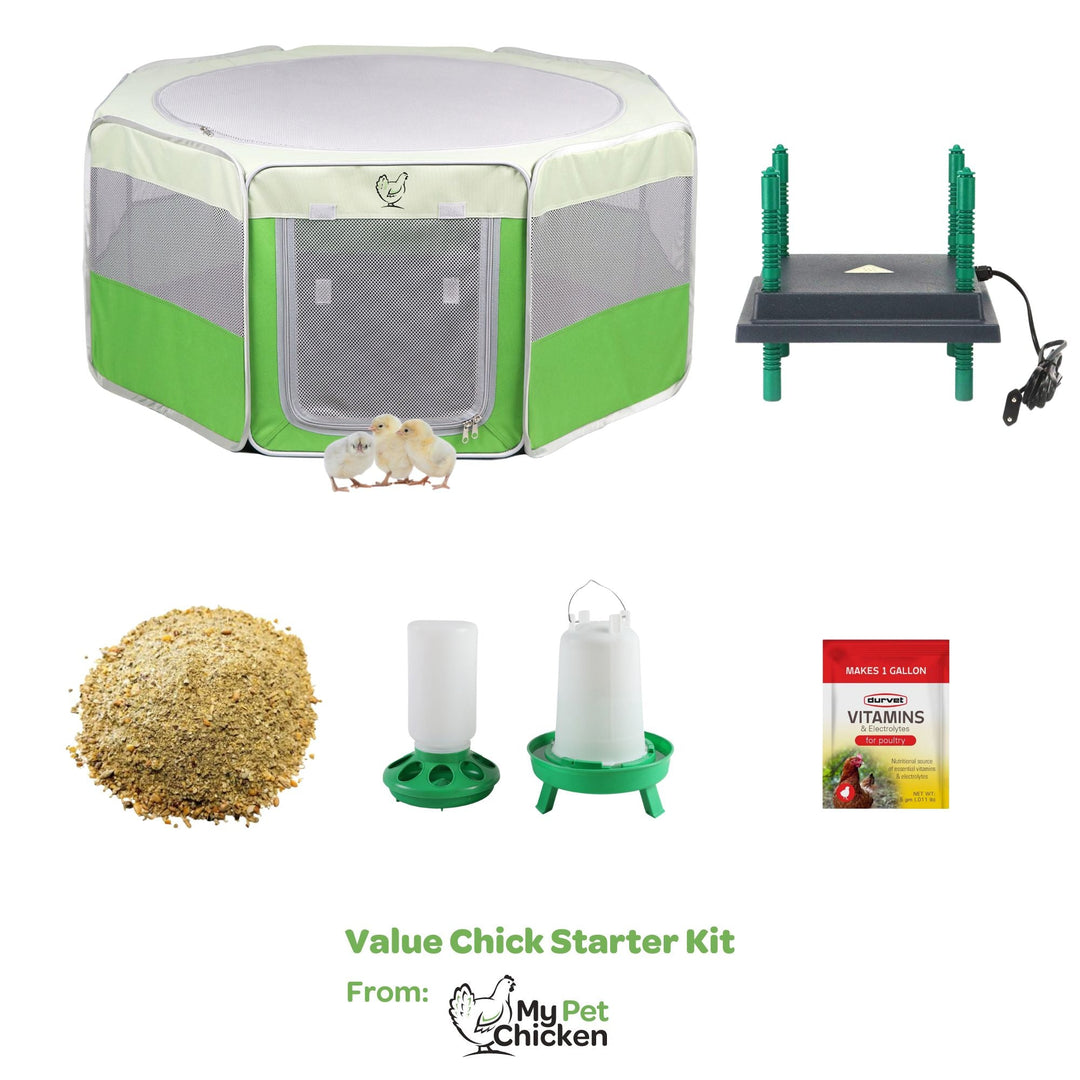How to Increase Chicken Egg Production Naturally: A Complete, Arizona-Tested Guide
How to Increase Chicken Egg Production Naturally: A Complete, Arizona-Tested Guide
Whether you’re troubleshooting a mid-season dip or planning an egg-focused backyard flock, consistent, natural egg production comes down to seven pillars: nutrition, light, low stress, clean water and gut health, breed selection, Arizona-specific seasonal strategy, and proactive troubleshooting. This guide distills field-proven practices for desert climates and links to in-depth resources on Az Chickens so you can implement confidently without chemicals or gimmicks.
KEY TAKEAWAYS / SUMMARY
- Prioritize investments that directly affect daily output: high-quality layer feed, clean water delivery, shade and ventilation, and well-designed nest boxes that protect eggs.
- Lighting: Maintain a consistent 14–16 hours of day length for layers, ideally with pre-dawn supplemental light in fall/winter.
- Arizona heat strategy: Maximize airflow and breathable shade, offer electrolyte/wet mash options during heat spikes, and keep nesting areas quiet and cool.
- Nutrition: Keep crude protein at 16–18% for layers; bump protein during molt. Free-choice calcium and grit are essential.
- Stress reduction: Provide 1 nest box per 3–4 hens, 8–10 inches of roost space per bird, and predator-proof the coop to prevent night stress.
- Supplements: Use probiotics and targeted supplements during heat, molt, or after antibiotics to support gut health and shell quality.
- Breeds: Heat-hardy, high-output breeds (e.g., Leghorn, Rhode Island Red, Bresse, select hybrids) perform best in the Southwest.
- Buying gear: Choose gravity-fed or nipple waterers for clean hydration; roll-away nest trays to minimize cracks; UV-stable, breathable shade; timers for lighting; and supplements with clear ingredient panels.
- Budgeting: Start with core essentials (feed, water, shade, nesting) before add-ons; buy once, cry once on items that directly impact egg yield and egg quality.
How to use this guide: Focus first on the pillars you can implement this week—feed timing, water hygiene, shade, and nesting. Then layer in lighting, breed strategy, and supplements as needed. Each section includes practical steps plus links to deeper how-tos across Az Chickens.
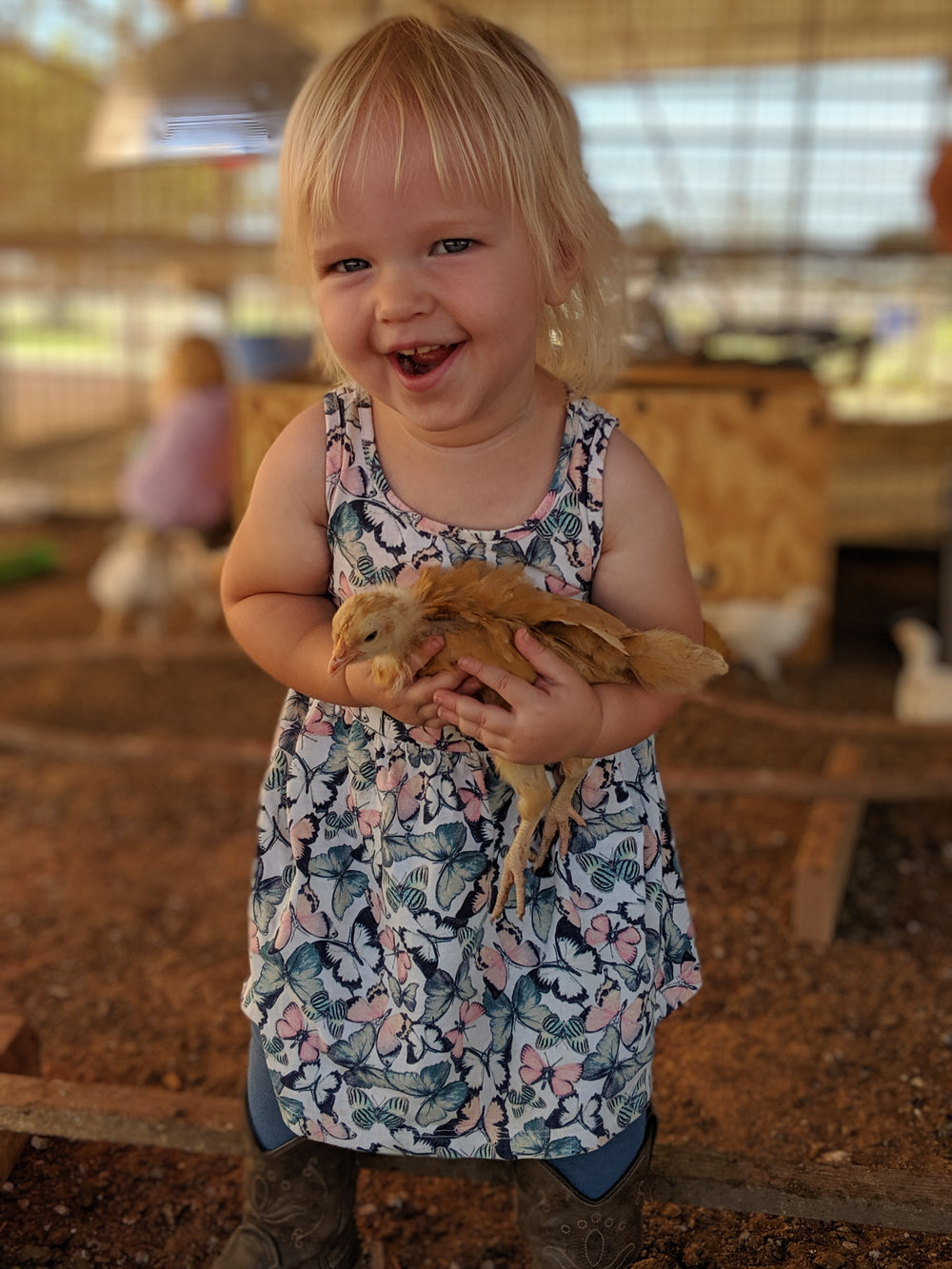
Pillar 1: Optimal Nutrition and Protein Timing
Feed is your biggest lever for egg output and shell quality. Underfeeding protein, calcium, and energy—or delivering feed at the wrong time—reduces lay rate fast. Align nutrition to both the bird’s biology and Arizona’s climate.
- Protein baseline: Keep layers at 20% protein; bump another 1–2% during molt or heavy heat stress to offset reduced intake. Expect a healthy layer to consume roughly 1/4 lb (110–120 g) of feed daily; in high heat, intake can drop 10–30% without management.
- Energy availability: In peak heat, hens eat less. Offer the day’s main ration early morning and after sunset when it’s cooler so birds hit daily intake targets.
- Calcium and grit: Free-choice oyster shell and insoluble grit support strong shells and digestion—critical for consistent egg numbers.
- Wet mash on heat days: Mix a portion of the day’s ration with cool water to encourage intake. Offer in shaded areas only, remove leftovers after an hour to prevent spoilage.
- Fresh greens and forage: Pasture and kitchen greens add micronutrients and reduce boredom pecking; balance so birds still consume the core ration.
- Storage and freshness: Keep feed in sealed, rodent-proof bins; rotate bags within 4–6 weeks to preserve vitamins and palatability.
For deep dives on layer nutrition and hot-weather adjustments, see the Az Chickens Health & Nutrition resources.
With nutrition dialed in, the next major driver is light—because hens lay in response to day length as much as diet.
Pillar 2: Strategic Lighting Schedules for Desert Climates
Hens respond to day length, not just diet. Consistent light signals the endocrine system to sustain lay. In Arizona, you’ll often use supplemental light in fall/winter to maintain production through shorter days—without overheating birds in small coops.
- Target 14–16 hours of total light daily for layers; provide around 10–20 lux (about 1–2 foot-candles) at roost and feeder height for reliable stimulation.
- Schedule supplemental light pre-dawn (e.g., 4:30–7:00am window) to avoid sudden after-dark “lights-out,” which can stress birds.
- Use cool-running LEDs on a reliable timer; avoid high-heat bulbs in enclosed coops and route wiring safely.
- Maintain darkness at night so birds rest; do not run lights 24/7.
- During molt, intentionally reduce light and protein demands; resume the full photoperiod once feather regrowth starts.
For housing modifications that support both airflow and safe wiring, review Housing & Environment.
Even perfect lighting can be undermined by stress. The next section helps you remove the most common production killers.
Pillar 3: Stress Reduction—The Silent Production Killer
Even perfect feed won’t overcome stress. Heat, crowding, predator pressure, and nesting competition will knock lay rates down. Design your coop and daily routine to be predictable, cool, and quiet.
- Space and roosting: Allow at least 8–10 inches of roost per bird with rounded edges. Aim for 4+ sq ft per bird in the coop and 8–10+ sq ft per bird in the run—more in summer.
- Nesting: Provide 1 nest box for every 3–4 hens. Position boxes in the darkest, coolest corner; curtains can help reduce traffic stress.
- Roll-safe nesting: Trays that protect or collect eggs minimize breakage and egg eating—critical for clean, salable eggs.
- Shade + airflow: Use breathable shade that lets hot air rise and escape; avoid heat-trap tarps without venting.
- Dust baths: Provide loose, dry areas with a sand/soil/ash blend so birds can self-manage parasites and stay cool.
- Predator-proofing: Establish a lockup routine; use hardware cloth (not chicken wire) on openings; secure night latches to prevent “near-miss” events that suppress laying.
With stress under control, a simple supplement plan helps birds maintain hydration, digestion, and shell quality through Arizona’s extremes.
Pillar 4: Probiotic and Supplement Protocols (Natural, Rotation-Based)
Gut health swings show up as poor feed conversion, loose stools, and mis-colored shells. In the desert, heat stress and water intake shifts challenge the gut biome. A natural, rotation-based supplement plan helps keep layers on track.
- Probiotics: Rotate quality probiotics to maintain diversity. Use after heat waves, antibiotic courses, or sudden feed changes.
- Electrolytes: On 100°F+ days, offer short-course electrolytes to maintain hydration. Alternate with plain water; don’t run continuously to avoid imbalances.
- Calcium sources: Offer free-choice oyster shell apart from feed so hens can self-regulate based on lay cycle.
- Molting support: Temporarily add amino acid support (methionine and lysine via higher-protein feeds); resume standard ration after feather set.
Explore supplement strategies showcased in Az Chickens guides on Health & Nutrition.
Some birds simply handle heat and stress better. Choosing the right genetics can stabilize your year-round totals.
Pillar 5: Breed-Specific Management for High Output in Heat
Breed selection matters. Some classic Mediterranean and hybrid layers maintain better egg production in Arizona summers than heavy-bodied birds. Manage breed traits to maximize results.
- Heat-hardy, high-output examples: Leghorn, Rhode Island Red, and purpose-bred production crosses.
- Dual-purpose with solid laying: American Bresse, among others, can produce well with good heat management and shading.
- Consider temperament: Calm layers handle backyard stress better, which stabilizes production.
- Leverage traits: Birds with larger combs and lighter frames often shed heat more effectively—pair them with excellent shade and water access.
- Start with quality: Genetic vigor and healthy starts matter. Review the Az Chickens guide to heat-ready breeds.
Read more: Heat-Resistant Chicken Breeds 2025 and American Bresse.
Even the best breeds need seasonally tuned management in Arizona’s heat, monsoon humidity, and quick shoulder seasons.
Pillar 6: Seasonal Adjustments for Arizona
Arizona’s extreme heat and quick shoulder-season transitions demand intentional seasonal management. The goal is to keep feed and water intake high, prevent stress spikes, and avoid shell defects.
Summer (Core Heat)
- Shade density: Provide layered shade (tree + sail or double-sail) with high venting. Avoid sealed tents that trap heat.
- Water management: Keep waterers shaded and cool; consider larger thermal mass or frequent refills. Clean often to prevent biofilm.
- Electrolyte protocol: Use short courses during 100°F+ stretches; alternate with plain water to avoid dependency.
- Feed timing: Shift most daily ration to dawn and dusk. Offer wet mash to bump intake.
- Nest comfort: Add breathable nest pad materials and keep nests in the coolest, quietest part of the coop.
Monsoon/Humidity Shifts
- Bedding: Swap or top-dress bedding more frequently; humidity raises parasite and mold risk.
- Ventilation: Open up vents but protect from rain blow-in. Ammonia control protects respiratory health and production.
- Parasites: Add dust-bath media and inspect roosts and vents for mites/lice weekly. Manage flies with dry bedding and prompt manure removal.
Fall/Winter
- Photoperiod: Add pre-dawn light to hit 14–16 hours total and maintain lay without heating the coop.
- Molting: Expect a temporary drop; increase protein and reduce stress; do not force lay during heavy molt.
- Cold snaps: Focus on dry, draft-free roosting and steady hydration rather than heavy heat in the coop; check nipple lines and hoses in higher-elevation cold spells.
Further reading: Sustainable Hot Climate Practices and Housing Environment.
Despite best practices, production dips can happen. A quick, systematic check prevents weeks of lost eggs.
Pillar 7: Troubleshooting Common Production Killers
When egg counts dip, run this quick diagnostic list. Small fixes compound fast.
- Age: Peak lay is typically within the first two years. Older hens cycle less frequently.
- Molt: Feathers on the floor? Expect a dip. Adjust protein and patience.
- Heat stress: Panting, wings held out, pale combs—rework shade, water, and timing immediately.
- Nest competition: More hens than nest capacity invites floor eggs and breakage. Add boxes or split the flock’s nesting areas.
- Hidden nests: Do a perimeter check. Secure birds to run/coop for a few days to reset habits.
- Parasites/illness: Inspect vents, under wings, and roosts. Review Marek’s Disease – Chickens in Arizona for disease-aware management.
- Nutrition gaps: Confirm feed freshness, protein level, calcium access, and actual daily intake.
- Water: Slime inside waterers or hot, stale water tanks crush intake. Clean and shade all water points.
- Lighting: In fall/winter, insufficient light hours reduce lay—verify timer function and bulb output; use timers with backup batteries after power outages.
- Behavior: Broody hens stop laying; egg eating or pecking can start after a single break—collect promptly and use roll-away nests.
What to Buy: A Practical Checklist That Actually Boosts Egg Numbers
Spend where it matters. These categories directly influence daily eggs and egg quality. Use this as a shopping framework and cross-reference Az Chickens’ educational library.
- Layer feed at 16–18% protein that stays fresh in sealed bins; buy bag sizes you’ll use within 4–6 weeks.
- Nipple or cup-style waterers under shade for cool, clean hydration; choose UV-stable plastic or metal and sizes that allow daily refresh in summer.
- Reliable 24-hour timer and cool LED bulbs for pre-dawn supplemental light; look for models with battery backup to ride out outages.
- Breathable shade sails or living shade that dump heat upwards (not enclosed tarps). UV-rated shade cloth (70–90%) performs well in Arizona sun.
- Nest boxes: 1 per 3–4 hens; consider roll-out designs to reduce breakage and egg eating. Aim for quiet placement away from high-traffic areas.
- Oyster shell and grit offered separately from feed in weather-protected dispensers.
- Probiotics and short-course electrolytes for heat waves and recovery windows; follow label directions and rotate products to maintain effectiveness.
- Ventilation upgrades: More roofline/upper vent area beats coop fans in small spaces; cover openings with 1/2-inch hardware cloth.
- Dust bath area with sandy, well-draining material to reduce parasite load; keep it dry through monsoon season.
Build your plan with the help of Az Chickens’ topic hubs:
- Health & Nutrition
- Housing & Environment
- Chick Care
- Sustainable Hot Climate Practices
- Heat-Resistant Chicken Breeds 2025
Arizona-Tuned Daily and Weekly Routines
Consistency produces eggs. Here’s a simple rhythm that matches desert realities.
Daily (Summer)
- Pre-dawn: Lights on (fall/winter). Check waterers are full and cool; feed the day’s main ration now.
- Midday: Shade check—no stagnant heat pockets. Offer wet mash if intake seems low; refresh water if it’s warmed.
- Evening: Second small feed. Collect eggs before night to reduce breakage and prevent egg-eating.
- Night lockup: Predator-proof closure and quiet coop routine; verify timers and doors.
Weekly
- Waterer scrub: Remove biofilm; rinse thoroughly; sanitize if needed and let dry before refilling.
- Nest refresh: Replace pads or bedding; keep nests dry and cool.
- Vent/roof check: Ensure unobstructed airflow; clear any debris and confirm shade anchoring.
- Parasite scan: Inspect under wings and around vent; check roost undersides.
- Feed inventory: Confirm freshness and restock before running low; rotate bags first-in, first-out.
Egg Quality: Shell Strength, Cleanliness, and Collection
Egg count is only half the story. Clean, strong shells minimize loss and keep your cartons salable.
- Calcium: Offer oyster shell free-choice; some hens need more than others.
- Hydration: Thin or wrinkled shells often coincide with heat stress; ensure cool water access.
- Nest environment: Cool, shaded, quiet. Overcrowded nests cause breakage and dirty shells.
- Collection frequency: Pick up eggs at least twice daily in heat; more often for high-output flocks.
- Sanitation: Keep nest pads clean; avoid wet bedding to reduce bacterial load; wash only soiled eggs and dry promptly if your local rules require.
Common Myths That Waste Money
- “More light all night means more eggs.” Birds need darkness to rest; 24/7 light leads to stress and health issues.
- “Any shade is good shade.” Enclosed tarps without venting turn into heat traps; use breathable, vented shade.
- “Higher protein always equals more eggs.” Excess protein without balancing energy and minerals can backfire. Target levels to life stage and heat.
- “One nest for the whole flock is fine.” Competition causes floor eggs, breakage, and stress pecking.
- “You need a rooster for eggs.” Hens lay without a rooster; one is only needed for fertilized eggs.
- “Cayenne or random kitchen spices will ‘force’ laying.” Laying is driven by health, light, nutrition, and stress—not spice racks.
Planning a Profitable Egg-Selling Operation
If you’re building toward sales, standardize your systems now so every egg looks and feels the same in carton. That means consistent lighting, predictable feeding windows, quiet nest areas, and stringent water hygiene. Maintain simple production logs: daily egg count, feed used, weather/heat index notes. Patterns will tell you which upgrade pays off first—e.g., adding nest boxes vs. improving shade or water delivery. Track cost per dozen and losses from cracks/dirty shells to quantify ROI on housing and nest upgrades.
For early-stage planning and scaling insights, explore Az Chickens’ Commercial & Business Development hub.
A Final, Field-Tested Checklist
- Diet: 16–18% layer feed, fed at dawn and dusk in summer; free-choice oyster shell and grit.
- Water: Shaded, clean, cool; scrub weekly; consider nipple/cup systems to reduce contamination.
- Light: 14–16 hours total using pre-dawn LEDs on a timer during fall/winter.
- Shade/Air: Breathable shade; maximize high venting; avoid enclosed heat traps.
- Nesting: 1 box per 3–4 hens; cool, quiet location; refresh pads/bedding weekly.
- Stress: Consistent lockup; predator-proof; dust bath access; routine flock checks.
- Supplements: Probiotics post-stress; electrolytes during heat spikes; short, targeted courses.
- Breeds: Choose heat-ready, proven layers for the Southwest; plan for molt and age-related declines.
- Logs: Track egg counts, feed use, and temperature to identify bottlenecks quickly.
